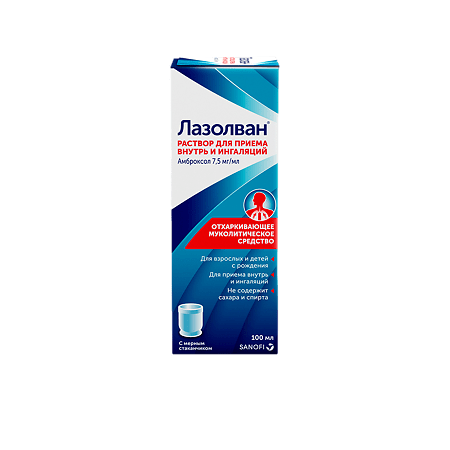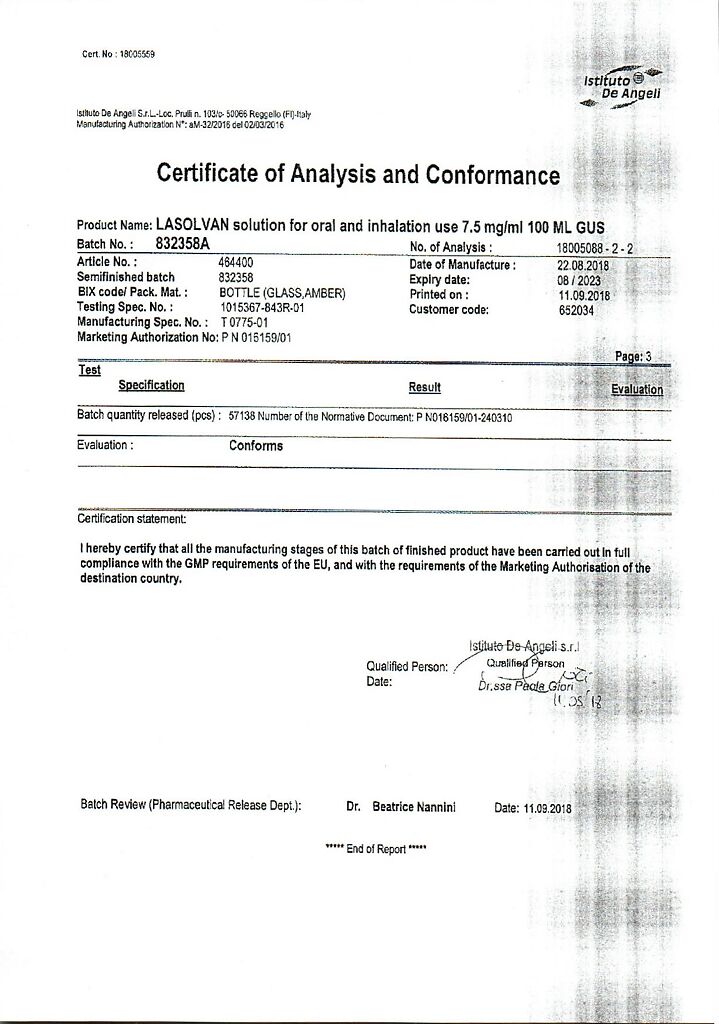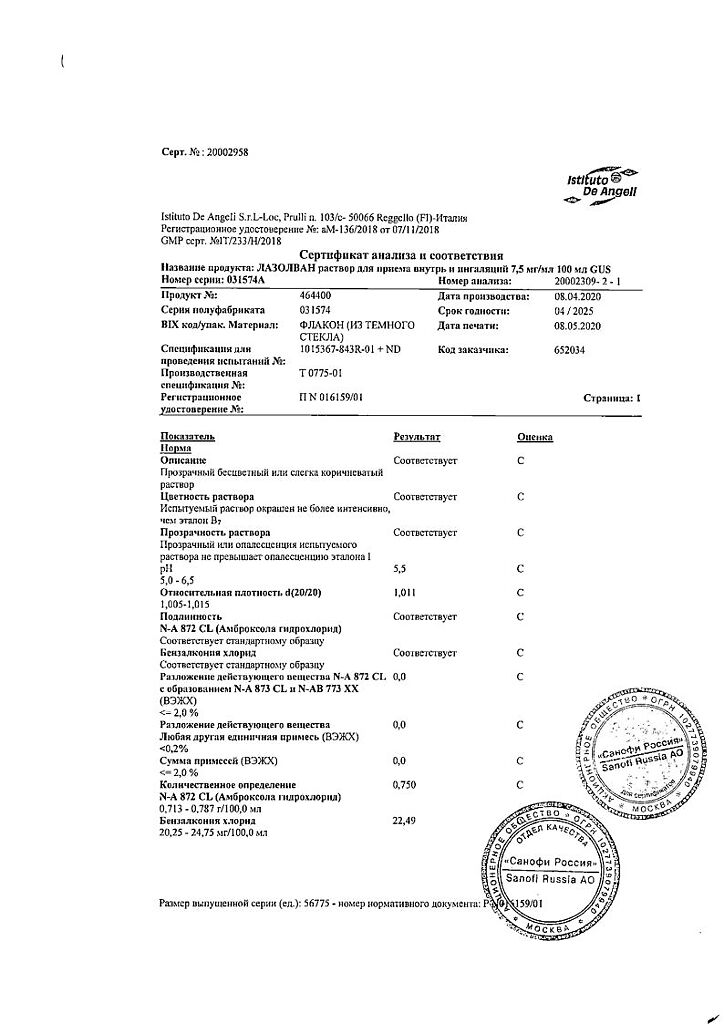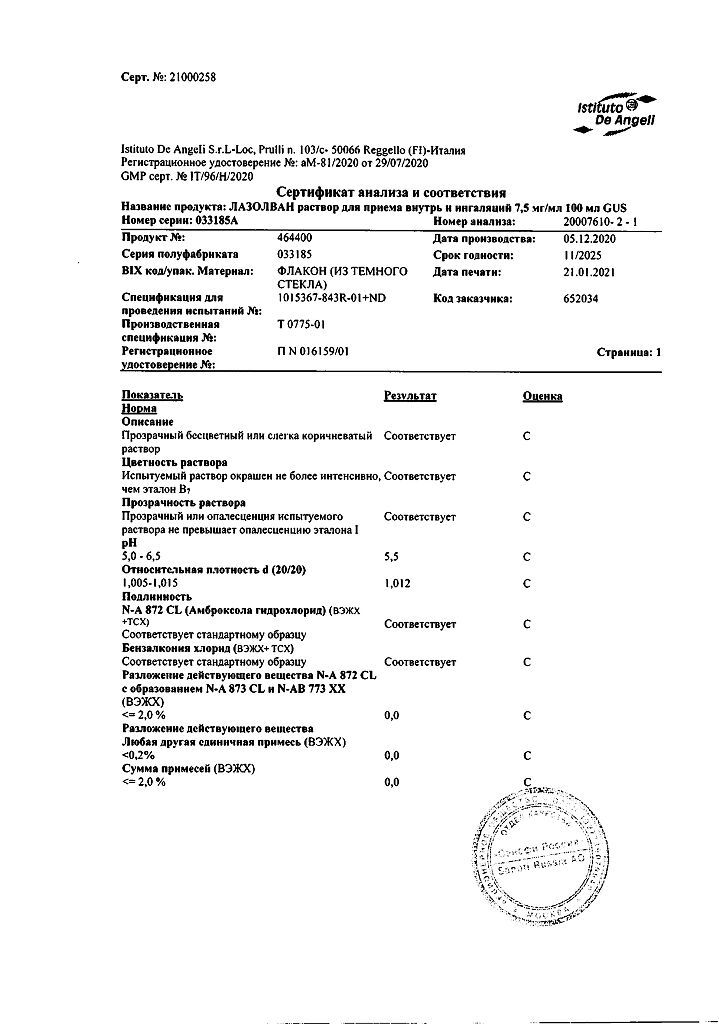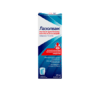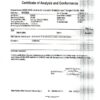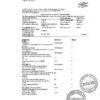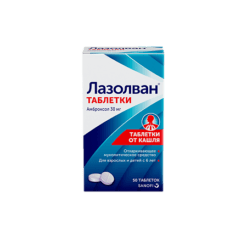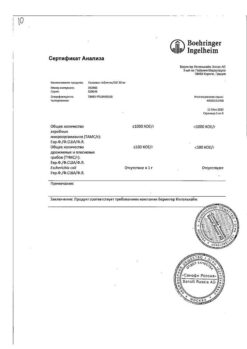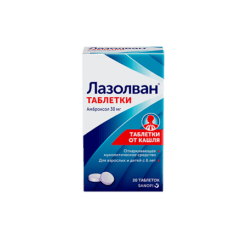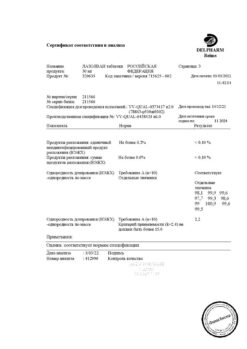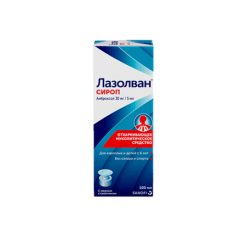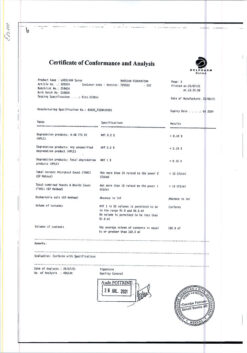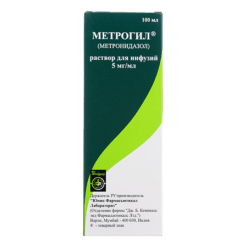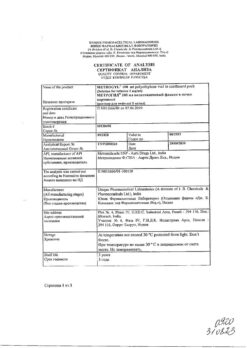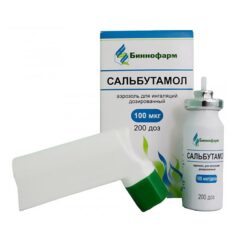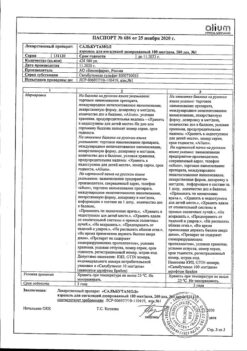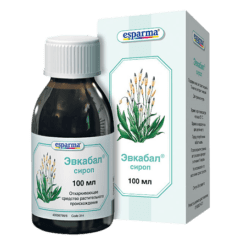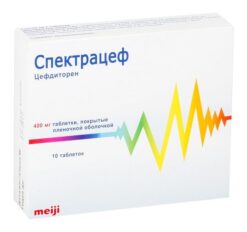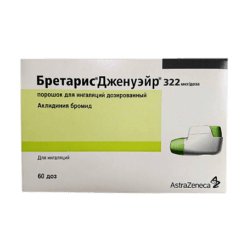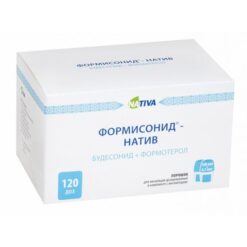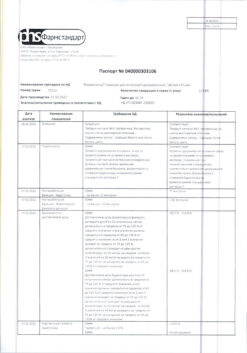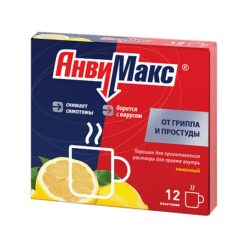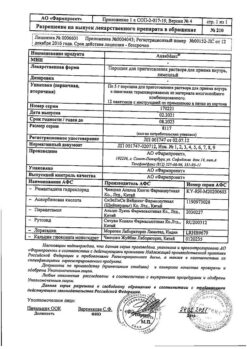No products in the cart.
Lazolvan, 7.5 mg/ml 100 ml
€10.24 €8.96
Description
Ambroxol is the active ingredient of the drug Lazolvan. It has secretomotor, secretolytic and expectorant action. It stimulates serous cells of glands of bronchial mucosa. Ambroxol increases the production of pulmonary surfactant, stimulates ciliary activity and normalizes the disturbed ratio of serous and mucous components of sputum. By activating hydrolyzing enzymes and enhancing the release of lysosomes from Clara cells, it reduces the viscosity of sputum. Ambroxol increases the flow and transport of mucus (mucociliary clearance). Increasing mucociliary clearance improves sputum discharge and makes it easier to cough.
Pharmacokinetics
Ambroxol is characterized by rapid and almost complete absorption with linear dose-dependence in the therapeutic concentration range. Cmax with oral administration is reached after 1-2.5 hours. Vd after oral administration is 552 l. In the therapeutic range of concentrations binding to plasma proteins is approximately 90%.
The transfer of ambroxol from the blood to the tissues when administered orally is rapid. The highest concentrations of the active component of the drug are observed in the lungs. Approximately 30% of the orally administered dose undergoes primary metabolism. Studies on human liver microsomes have shown that CYP3A4 is the predominant isoform responsible for metabolizing ambroxol to dibromanthranilic acid. The remainder of ambroxol is metabolized in the liver primarily by glucuronidation and by partial cleavage to dibromanthranilic acid (approximately 10% of the administered dose), as well as a small number of additional metabolites. The terminal T1/2 of ambroxol is 10 h. Total clearance is within 660 ml/min, renal clearance accounts for approximately 8% of total clearance.
There has been no clinically significant effect of age and sex on the pharmacokinetics of ambroxol, so there is no reason to make any dosage change based on these characteristics.
In patients with hepatic impairment, ambroxol excretion is delayed, resulting in a 1.3-2-fold increase in plasma ambroxol levels. Due to the wide therapeutic range of ambroxol, no dose reduction is required.
Indications
Indications
Active ingredient
Active ingredient
Composition
Composition
Active substances:
ambroxol hydrochloride 7.5 mg.
Auxiliary substances:
citric acid monohydrate – 2 mg,
sodium hydrophosphate dihydrate – 4.35 mg,
How to take, the dosage
How to take, the dosage
Inhaled and inhaled.
Inhaled as drops (1 ml = 25 drops), with meals, adding to tea, fruit juice, milk or water. Adults at the beginning of treatment – 4 ml 3 times a day, children over 6 years old – 2 ml (50 drops) 2-3 times a day, children from 2 to 6 years old – 1 ml (25 drops) 3 times a day, children under 2 years old – 1 ml (25 drops) 2 times a day.
Inhaled, adults and children over 6 years – 1-2 inhalations with 2-3 ml of the solution daily, children under 6 years – 1-2 inhalations with 2 ml of the solution daily.
The inhalation solution can be used using any modern equipment for inhalation (except steam inhalers). The product is mixed with saline and can be diluted in a 1:1 ratio to achieve optimal humidification in the respirator. Since deep inhalation therapy may provoke coughing jolts, inhalation should be done in normal breathing mode. It is usually recommended that the inhalation solution be warmed to body temperature before inhalation.
Patients with bronchial asthma are advised to inhale after taking bronchodilators.
Interaction
Interaction
Should not be combined with cough suppressants making it difficult to expectorate sputum.
The oral and inhaled solution contains benzalkonium chloride. In patients with overactive airways, this preservative may cause bronchial spasm during inhalation.
Special Instructions
Special Instructions
Should not be combined with cough suppressants making it difficult to expectorate sputum.
The oral and inhaled solution contains benzalkonium chloride. In patients with overactive airways, this preservative may cause bronchial spasm during inhalation.
Contraindications
Contraindications
With caution should be prescribed: in the second and third trimesters of pregnancy, and in patients with renal and/or hepatic impairment.
Side effects
Side effects
Allergic reactions: skin rash, urticaria, angioneurotic edema, in some cases – allergic contact dermatitis. Extremely rare cases of acute severe reactions of anaphylactic type (anaphylactic shock) have been reported.
In long-term use in high doses – heartburn, gastralgia, nausea, vomiting.
Overdose
Overdose
Symptoms: nausea, vomiting, diarrhea, dyspepsia, gastralgia are possible.
Treatment: induction of vomiting, gastric lavage during the first 1-2 hours after taking the drug; intake of fat-containing products, symptomatic therapy.
Similarities
Similarities
Additional information
| Shelf life | 5 years |
|---|---|
| Conditions of storage | In the dark place at a temperature not exceeding 25 °C (do not freeze) |
| Manufacturer | Instituto de Angeli S.r.l., Italy |
| Medication form | oral solution |
| Brand | Instituto de Angeli S.r.l. |
Other forms…
Related products
Buy Lazolvan, 7.5 mg/ml 100 ml with delivery to USA, UK, Europe and over 120 other countries.

